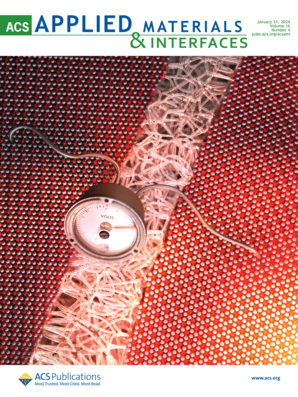Multifunctional Hydrogels Loaded with Mn Single-Atom Nanozymes: Advancing Endometrial Repair.
IF 8.3
2区 材料科学
Q1 MATERIALS SCIENCE, MULTIDISCIPLINARY
引用次数: 0
Abstract
Irregular endometrial damage often evolves into chronic conditions, such as endometrial thinning, functional tissue fibrosis, and intrauterine adhesions. These conditions pose significant challenges to female reproductive health. Addressing this, we developed a dynamic double-cross-linked hydrogel for the repair of fragile and dynamic endometrial tissue. This hydrogel integrates natural bioactive components (chitosan, protocatechuic aldehyde, and Fe(III)) and serves as a scaffold for Mn single-atom nanozymes (Mn SAN). Through dynamic covalent and hydrogen bonding, the hydrogel exhibits exceptional adhesion, injectability, degradability, and self-healing capabilities. The embedded Mn SAN, leveraging their unique metal active center, deliver superior catalytic activity and selectivity. When introduced into endometrial lesions in mice, this bioactive hydrogel exerts a synergistic effect that not only significantly boosts cell proliferation but also effectively modulates hormone levels. As a result, it facilitates remarkable tissue repair within a mere two-week period. Importantly, this therapeutic approach is both hormone- and cell-free, representing a noninvasive intervention. This innovative design thus paves the way for a groundbreaking strategy in the engineering of advanced materials specifically tailored for endometrial regeneration.负载Mn单原子纳米酶的多功能水凝胶:促进子宫内膜修复。
不规则子宫内膜损伤常演变为慢性疾病,如子宫内膜变薄、功能性组织纤维化和宫内粘连。这些情况对女性生殖健康构成重大挑战。为了解决这个问题,我们开发了一种动态双交联水凝胶,用于修复脆弱和动态的子宫内膜组织。这种水凝胶整合了天然生物活性成分(壳聚糖、原儿茶醛和铁(III)),并作为Mn单原子纳米酶(Mn SAN)的支架。通过动态共价键和氢键,水凝胶表现出优异的粘附性、可注射性、可降解性和自愈能力。嵌入的锰SAN利用其独特的金属活性中心,提供卓越的催化活性和选择性。将这种生物活性水凝胶引入小鼠子宫内膜病变后,可发挥协同作用,不仅能显著促进细胞增殖,还能有效调节激素水平。因此,它在短短两周内促进了显著的组织修复。重要的是,这种治疗方法既不含激素也不含细胞,是一种非侵入性干预。因此,这种创新的设计为专门为子宫内膜再生定制的先进材料工程的开创性策略铺平了道路。
本文章由计算机程序翻译,如有差异,请以英文原文为准。
求助全文
约1分钟内获得全文
求助全文
来源期刊

ACS Applied Materials & Interfaces
工程技术-材料科学:综合
CiteScore
16.00
自引率
6.30%
发文量
4978
审稿时长
1.8 months
期刊介绍:
ACS Applied Materials & Interfaces is a leading interdisciplinary journal that brings together chemists, engineers, physicists, and biologists to explore the development and utilization of newly-discovered materials and interfacial processes for specific applications. Our journal has experienced remarkable growth since its establishment in 2009, both in terms of the number of articles published and the impact of the research showcased. We are proud to foster a truly global community, with the majority of published articles originating from outside the United States, reflecting the rapid growth of applied research worldwide.
 求助内容:
求助内容: 应助结果提醒方式:
应助结果提醒方式:


